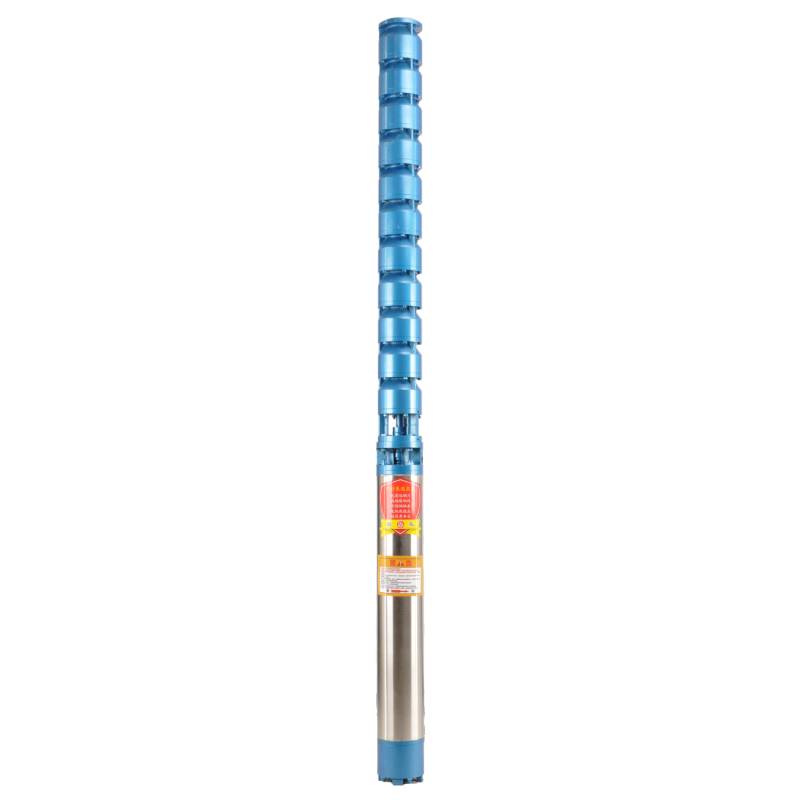Dec . 05, 2024 20:38 Back to list
Testing Dry Run Performance for Submersible Pumps in Various Conditions
Understanding Dry Run in Submersible Pumps
Submersible pumps are vital components in various industries and applications, ranging from wastewater management to agricultural irrigation. These pumps are designed to be submerged in the fluid they are pumping, which helps in maintaining their efficiency and effectiveness. However, one significant challenge that can lead to pump failure is a phenomenon known as dry running. Understanding dry run conditions, their causes, and prevention strategies is essential for ensuring the longevity and reliability of submersible pumps.
What is Dry Running?
Dry running occurs when a submersible pump operates without adequate fluid supply. In such cases, the pump is forced to run in a dry state, causing significant wear and tear on its components, especially the seals, bearings, and impellers. This condition can lead to overheating, premature failure, and ultimately, the need for costly repairs or replacements.
Causes of Dry Running
There are several reasons why a submersible pump might experience dry running
1. Low Fluid Levels One of the most common causes is a decrease in the fluid level below the pump's intake. This can result from evaporation, leaks in the system, or insufficient supply from the source.
2. Blockages If the intake of the pump is obstructed by debris, sediment, or other materials, it may fail to draw in the necessary fluid. This situation can lead to dry running, as the pump continues to operate without engaging with the liquid.
3. Malfunctioning Float Switches Many submersible pumps are equipped with float switches that regulate their operation based on fluid levels. If a float switch fails, it may not trigger the pump to stop when the water level drops, causing dry running.
4. Poor Installation Improper installation of the pump can lead to issues with alignment or positioning, which may result in the pump not being submerged adequately, leading to dry running conditions.
Consequences of Dry Running
The implications of dry running are severe
. The primary consequence is physical damage to the pump, which can manifest in several waysdry run submersible pump

- Overheating Without the cooling effect of the fluid, the pump components can become excessively hot, leading to warping or damage to seals and bearings.
- Component Wear Prolonged dry running accelerates wear and tear on critical components, significantly shortening the pump’s operational lifespan.
- Cavitation The absence of liquid can also lead to cavitation, a condition where vapor bubbles form in the fluid and collapse violently, causing shock waves that damage the pump.
Prevention Strategies
Preventing dry running is crucial to maintaining the health of submersible pumps. Here are several strategies
1. Level Monitoring Utilizing reliable level sensors can help in accurately monitoring fluid levels to prevent the pump from operating in dry conditions.
2. Regular Maintenance Routine inspections and maintenance can identify potential blockages, wear, or failure in float switches beforehand.
3. Proper Installation Ensuring the pump is installed correctly and positioned at the appropriate depth can prevent dry running due to inadequate submersion.
4. Pump Protection Devices Installing dry run protection devices can safeguard against the risks associated with low fluid levels. These devices can automatically shut off the pump when fluid levels drop below a preset threshold.
Conclusion
Understanding dry running in submersible pumps is essential for anyone involved in their operation or maintenance. By recognizing the causes and implementing effective prevention strategies, users can safeguard their pumps from the detrimental effects of dry running. This proactive approach not only ensures smooth operational efficiency but also extends the life of these invaluable machines, ultimately leading to improved productivity and reduced operational costs.
-
Submersible Water Pump: The Efficient 'Power Pioneer' of the Underwater World
NewsJul.01,2025
-
Submersible Pond Pump: The Hidden Guardian of Water Landscape Ecology
NewsJul.01,2025
-
Stainless Well Pump: A Reliable and Durable Pumping Main Force
NewsJul.01,2025
-
Stainless Steel Submersible Pump: An Efficient and Versatile Tool for Underwater Operations
NewsJul.01,2025
-
Deep Well Submersible Pump: An Efficient 'Sucker' of Groundwater Sources
NewsJul.01,2025
-
Deep Water Well Pump: An Efficient 'Sucker' of Groundwater Sources
NewsJul.01,2025
-
 Submersible Water Pump: The Efficient 'Power Pioneer' of the Underwater WorldIn the field of hydraulic equipment, the Submersible Water Pump has become the core equipment for underwater operations and water resource transportation due to its unique design and excellent performance.Detail
Submersible Water Pump: The Efficient 'Power Pioneer' of the Underwater WorldIn the field of hydraulic equipment, the Submersible Water Pump has become the core equipment for underwater operations and water resource transportation due to its unique design and excellent performance.Detail -
 Submersible Pond Pump: The Hidden Guardian of Water Landscape EcologyIn courtyard landscapes, ecological ponds, and even small-scale water conservancy projects, there is a silent yet indispensable equipment - the Submersible Pond Pump.Detail
Submersible Pond Pump: The Hidden Guardian of Water Landscape EcologyIn courtyard landscapes, ecological ponds, and even small-scale water conservancy projects, there is a silent yet indispensable equipment - the Submersible Pond Pump.Detail -
 Stainless Well Pump: A Reliable and Durable Pumping Main ForceIn the field of water resource transportation, Stainless Well Pump has become the core equipment for various pumping scenarios with its excellent performance and reliable quality.Detail
Stainless Well Pump: A Reliable and Durable Pumping Main ForceIn the field of water resource transportation, Stainless Well Pump has become the core equipment for various pumping scenarios with its excellent performance and reliable quality.Detail
